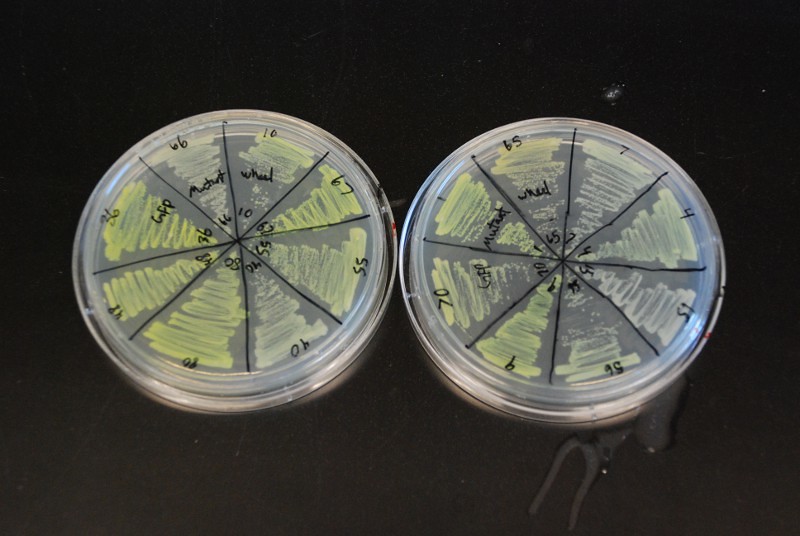Team:UC Davis/Project Selection
From 2011.igem.org
Start a Family
Got a favorite BioBrick? Check our our process for expanding basic parts into part families.Criteria
View our judging criteria for iGEM 2011 here.
Project Selection
The addition of regional competitions to the international iGEM Jamboree this year reduced the amount of time allotted to teams to complete their summer projects. We framed our project goals with the limited timeline in mind so that we could produce tangible results for the American regional competition in October and refine them in the time before the World Championship in November, should we be selected to attend it.
We also wanted to select a project that would build foundations for future teams. iGEM is founded on the spirit of open collaboration and enabling the design of genetic machines. We wanted to reflect these ideals by furthering the practice of synthetic biology in some way.
With these ideas in mind, we decided to create a streamlined process for the creation of mutant libraries, and to use said process to produce mutant libraries of the repressible LacI, TetR, and λ cI promoters, as well as GFP.
We also wanted to select a project that would build foundations for future teams. iGEM is founded on the spirit of open collaboration and enabling the design of genetic machines. We wanted to reflect these ideals by furthering the practice of synthetic biology in some way.
With these ideas in mind, we decided to create a streamlined process for the creation of mutant libraries, and to use said process to produce mutant libraries of the repressible LacI, TetR, and λ cI promoters, as well as GFP.
Why make mutant libraries?
 When designing novel genetic circuits, synthetic biologists are limited to using parts that are already available or that they can manufacture themselves. The creation of new parts can be incredibly time-consuming, since they must be extracted from existing natural genes and converted to a DNA part standard (like BioBricks) or modified from existing parts.
When designing novel genetic circuits, synthetic biologists are limited to using parts that are already available or that they can manufacture themselves. The creation of new parts can be incredibly time-consuming, since they must be extracted from existing natural genes and converted to a DNA part standard (like BioBricks) or modified from existing parts.The parts registry contains many useful parts, but in cases where fine control over the function of a part is required for a genetic circuit to function properly, the existing selection may not offer enough variation in expression strength, chemical response, or other characteristics.
Fine-tuning the control of a part can be achieved by random mutation of the bases in the DNA sequence of a part to change some characteristic -- say, transcription initiation, fluorescence intensity, or protein binding affinity -- whilst maintaining the basic functionality of the part. This is generally done in such away that many mutants are created at once which are then screened for their activity levels.
This allows the creation of large numbers of mutants which are viable (that is, maintaining the core function of the part) in a relatively short period of time. By performing this process on popular parts, one team can produce not only parts that are of a suitable activity for their circuits, but also parts that might fall outside of their usage range but be useful to other teams. Submitting these mutant libraries to the registry allows other scientists access to a broader range of parts with a broader activity range and familiar functionality, preventing wasted man-hours and reagents.
Why mutate repressible promoters?
Because promoters are integral to the function of all genetic circuits, it is especially important that they be available in a broad selection and that their activity is well-documented and predictable.R0010, R0040 and R0051 (the LacI, TetR, and λ cI repressible promoters) are among the most commonly used promoters in the registry. They are useful because they allow control control over gene expression that can be regulated using their corresponding repressor proteins, C0012, C0040 and C0051. This permits the construction of complex circuits that take advantage of the ability to switch, oscillate, or otherwise control the expression of genes by combining these parts in different ways.
J23101, another extremely popular promoter, is a member of a constitutive promoter mutant library based on the wild-type J23119. This family offers mutants with similar functionality at different expression activity levels, making it an ideal choice for designing circuits where fine control over gene expression is beneficial. The creation of promoter mutant libraries for R0010, R0040 and R0051 makes the same kind of fine expression control possible within repressible systems. Extensive characterization of these parts allows synthetic biologists to pick and choose mutants with an ideal level of repressor binding affinity or overall promoter activity, which is vital for the efficient design of complex circuits.
Why mutate GFP?
 GFP looks really cool, and a plate full of mutant GFP transformants looks even cooler.
GFP looks really cool, and a plate full of mutant GFP transformants looks even cooler.Unlike the promoter activity of our LacI promoter mutants, the fluorescence activity and color of our GFP mutants is a result of the structure of the translated folded protein. We wanted to quickly and easily asses our mutagenic PCR protocol's ability to produce mutants of protein-coding genes that retain some level of the activity of the original protein. Because GFP expression is visible to the naked eye (and even more visible under long-wave UV light exposure from a handheld lamp), mutations to the GFP gene that produce alterations in protein structure that produce changes in color or fluorescence level can be quickly assessed.
 "
"




